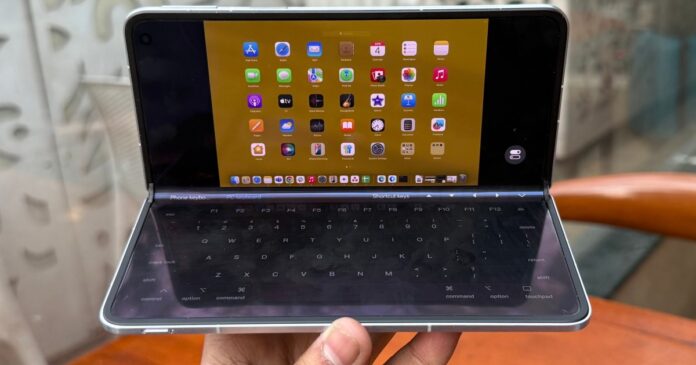Introduction to Remote Access
The biggest strength of Apple’s ecosystem is its seamless cross-device connectivity. However, despite its dominance in the mobile-computing market, Apple hasn’t offered two-way control for iPhones and Macs to remotely operate each other. This is surprising, given Apple’s strong focus on security. The situation changed slightly with the introduction of iOS 18 and macOS Sequoia, which brought iPhone Mirroring, but there’s still no equivalent feature to access and control Mac desktop on an iPhone or iPad.
The Current State of Remote Access
Some third-party options have filled this gap, but they have their limitations. Chrome Remote Desktop offers a free and straightforward path for remote control, but it lacks features like file transfer or chat and requires the Chrome browser. Other options, such as Microsoft Remote Desktop and TeamViewer, offer more features but often come at a premium or lock the best features behind a subscription.
Oppo’s O+ Connect System
Oppo has introduced its O+ Connect system, which allows users to manage, edit, organize, and view local smartphone files from their PC. The platform also enables seamless transfer of files between the two systems. With the introduction of the Find N5, the world’s slimmest phone, Oppo introduced a remote PC control system for Macs. After using it for a few weeks, it’s clear that this system is a game-changer.
A Suitable Form Factor
The biggest challenge with remotely controlling a desktop is dealing with cramped controls on a traditional smartphone screen. A foldable phone like the Oppo Find N5 offers a more natural desktop experience due to its larger canvas. This makes it easier to handle macOS windows, especially in apps where text is the primary focus, such as Docs, Asana, and web browsers. Even when not remotely mirroring the MacBook Air, the file manager view on the Find N5 was not cramped, making it easy to spot necessary documents.
Control Dexterity
The lower half of the Find N5’s screen transforms into a giant touchpad or opens a full-fledged Mac keyboard, supporting core multi-finger gestures like two-finger swipe, drag and move, four-finger pinch, and three-finger slide. Oppo has also implemented quick controls for accessing Mission Control, Launchpad, and dock with a single tap, as well as controls for putting the remote Mac to sleep mode, powering it off, restarting, or sending files.
A Smooth Experience
One of the biggest concerns with remotely accessing a Mac on a mobile phone is reliability and the technical learning curve. Oppo has done a fantastic job of keeping the process clean and straightforward. The only requirements are creating an Oppo ID account and downloading the companion O+ Connect on the Mac. Once set up, all that’s needed is for the Mac to be powered on and connected to the internet, preferably with a high-speed connection.
Technical Performance
When the MacBook Air was connected to a broadband internet with an average 200-300Mbps bandwidth, remotely accessing it on the Oppo Find N5 worked seamlessly. Tasks like chatting on Slack, sending images, and accessing Workspace progress were all possible without fundamental problems. Even when both devices were connected to a cellular hotspot, the remote access worked, although the experience was less fluid, especially with low-bandwidth connections.
Hey Apple, Take Notes
Apple’s ecosystem is notoriously locked, making it surprising to see seamless drag-and-drop file transfer between the Oppo Find N5 and an M4 MacBook Air. Being able to access a Mac remotely without significant limitations, even on an Android phone, is a technological surprise. This convenience is not perfect but shows that with the right intent, Apple could do more with its hardware ecosystem.
Conclusion
Oppo’s O+ Connect system and the Find N5 have demonstrated a practical solution for remote Mac access on a mobile device. While there are some technical snags and limitations, the overall experience is smooth and convenient. This should serve as a message to Apple to explore more possibilities within its ecosystem, leveraging its existing tech stack and talent pool. Perhaps future devices, like a foldable iPhone or a powerful iPad, will embrace a hybrid Mac existence or offer more comprehensive remote control features, enhancing the user experience across devices.

